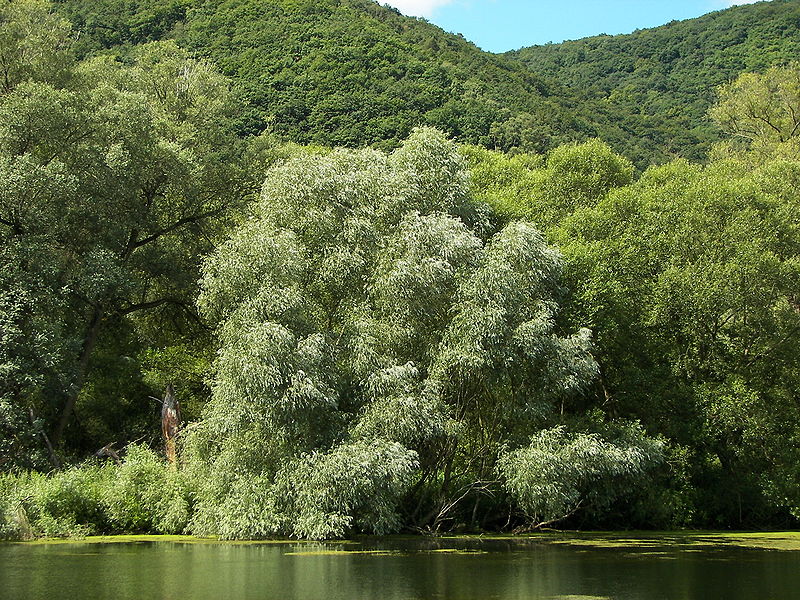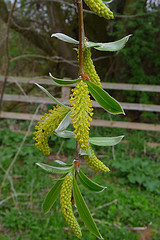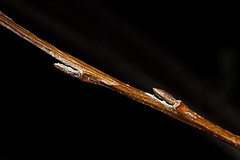How does Salix alba reproduce?
If we look at the phylum of Salix alba, we see that is anthophyta. This actually gives us a lot of information on how this plant reproduces. Because this plant is under this phylum, that means that it is an angiosperm. This means that it has covered seeds that can be anything from fruits, to flowers, and in the case of Salix alba, catkins
Catkins are dense often cylindrical cluster of flowers. In the case of Salix alba, these catkins are dioecious. That means the flowers of a particular catkin are all one sex. On the right, is a male catkin courtesy of Steve Hammonds. This methods uses wind pollination. that means instead of relying on insects of animals to spread their pollen. Salix alba uses the wind. It does this by releasing the the seeds within the flower, and the flowers are within the catkin. This means vast amounts of seeds and pollen are released. This helps the continuation of the species.
On the left, is a bud that belongs to Salix alba. This bud will eventually mature into fully developed catkins. The buds come out in the spring and will turn into catkins by mid summer.
Salix alba follows a prototypical life cycle for tree and has an alteration of generations. First off, a seed must be fertilized. This is then a zygote (2n). The zygote goes through mitosis many times and become a sporophyte (multicellular diploid). These steps all fall within the first of two generations. This is also the dominant generation of Salix alba. Next, the plant does through meiosis which will create haploid (n) spores. These spores go through mitosis to produce a gametophyte (multicellular haploid). The gametophyte goes through mitosis to produce gametes. These gametes are the seeds we are familiar with. Then the cycle returns to the beginning.
One of the things that that makes the willow family so strong is their ability to hybridize. Hybridization is when two different species and able to mate and create a new species. A common example used is the Zonkey (half zebra and half donkey). In the case of willows, they can hybridize easily because they can cross fertilize each other. This allows willow tree to have a vast diversity of species ensuring their survival. For a good definition of cross fertilization check out this website from marrian-webster.
We learned how Salix alba reproduces now so lets look at the interaction between species.


